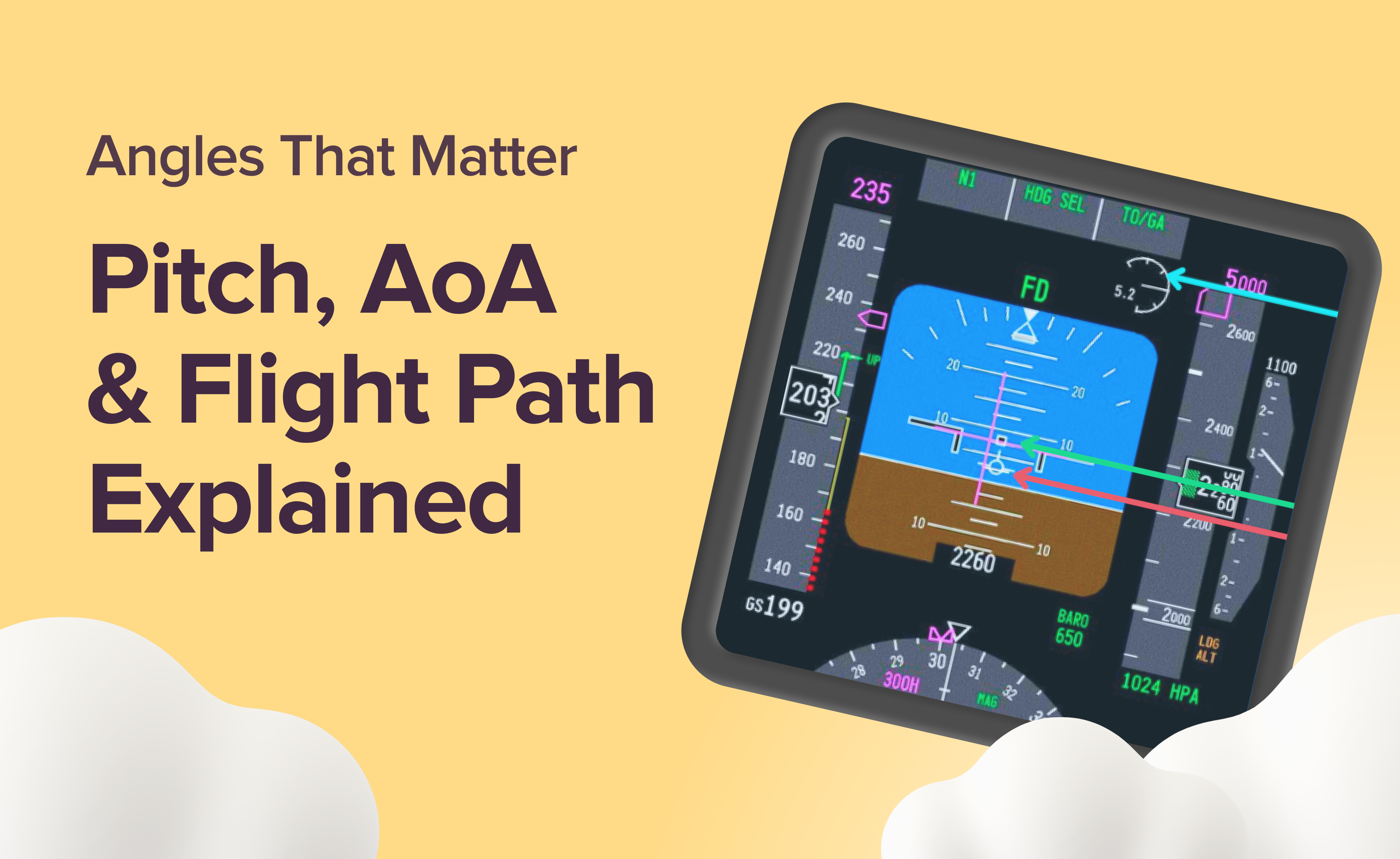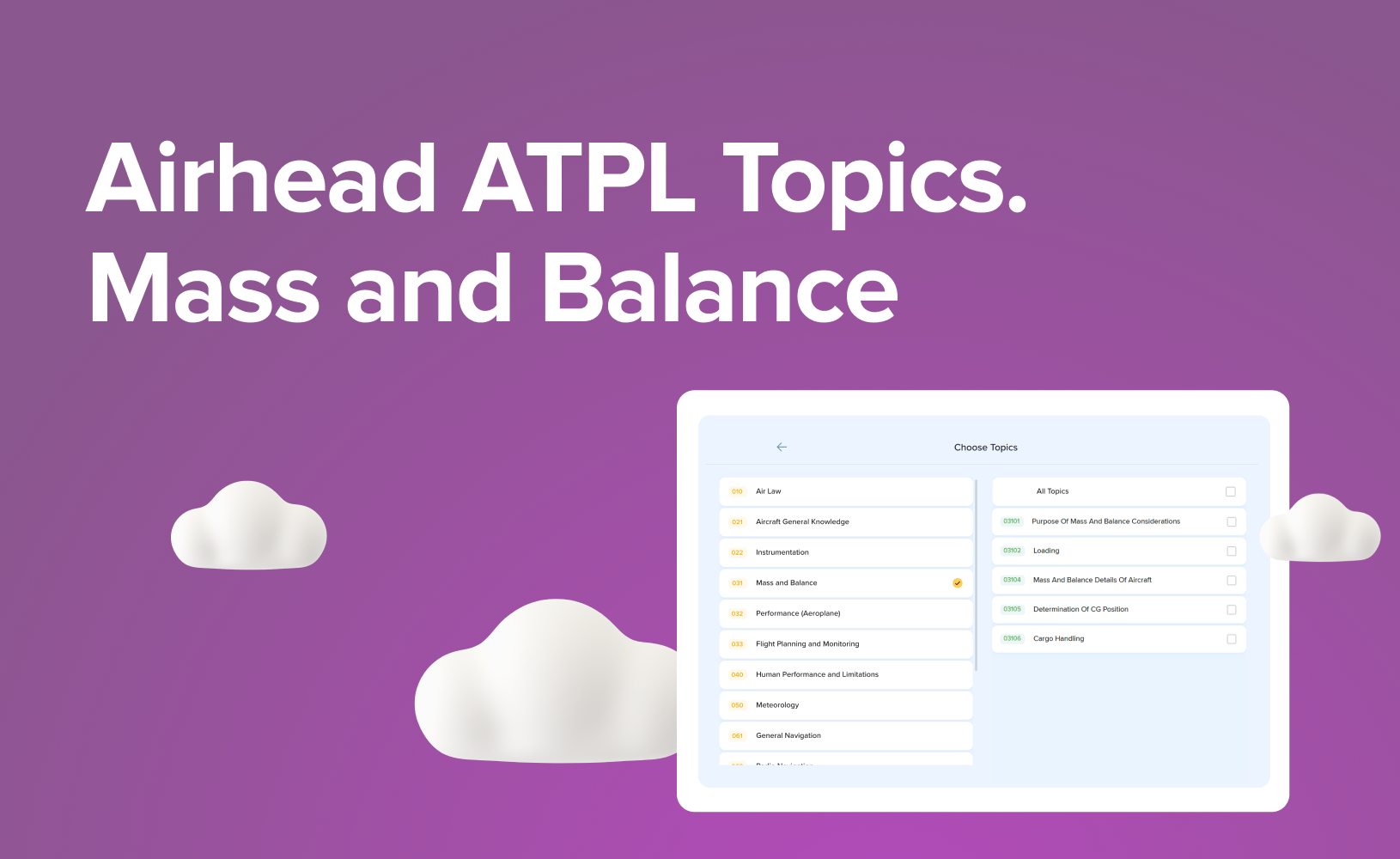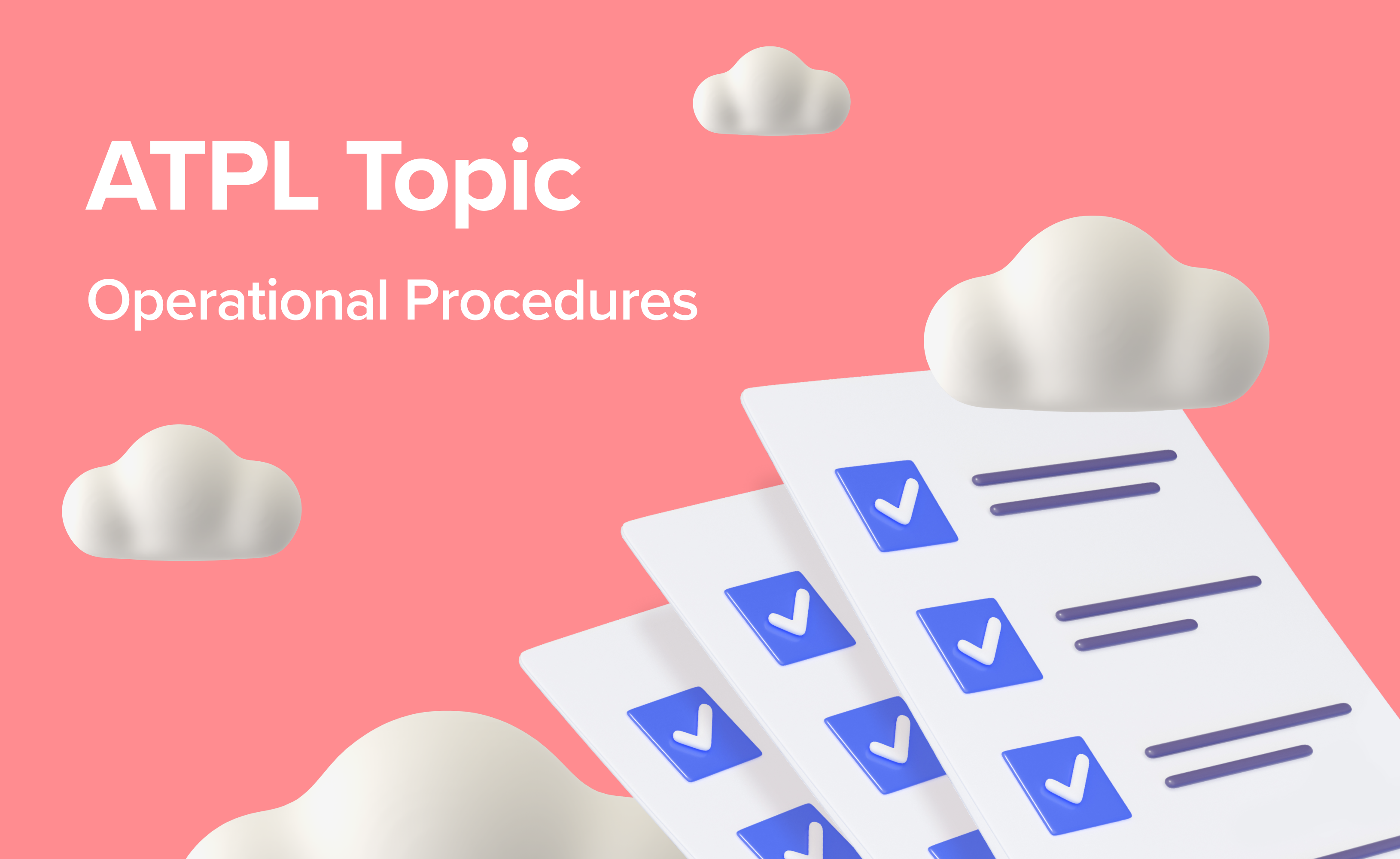Take On Your First ATC Calls.
A Help Guide for Student Pilots

Navigating the skies as a student pilot is an exhilarating experience. However, one of the most daunting tasks for many aspiring aviators is mastering the art of Air Traffic Control (ATC) communication.
For those pursuing their Airline Transport Pilot Licence (ATPL) in the UK and Europe, understanding and effectively engaging with ATC is crucial. This guide aims to address the common challenges faced by student pilots, offer practical advice, and provide resources to help you communicate with confidence and professionalism.
Challenges of First ATC Communications

As a student pilot, making your first ATC calls can feel like stepping into a new world. The following challenges are common but can be overcome with the right approach and mindset.
1. Unfamiliarity with Phraseology
Aviation communication follows a specific set of phrases and terms. For aspiring pilots, this language can seem like an entirely new dialect, leading to confusion and hesitancy.
Don't worry, everyone starts somewhere! Practice standard phraseology with your instructor and listen to LiveATC to become familiar with real-world communication.
2. Speed of Communication
ATC conversations are often rapid, leaving little time for hesitation or misunderstanding. This can be intimidating for new pilots who are still getting used to the pace of flying.
Take a deep breath and stay calm. Listen attentively and wait for a pause before transmitting. Remember, clear and concise communication is key.
3. Fear of Making Mistakes
Many student pilots fear being judged or reprimanded for mistakes, which can cause anxiety and reluctance to engage. This fear can hinder learning and progress.
Everyone makes mistakes, and controllers understand that you're learning. Don't be afraid to ask for clarification or repeat instructions if needed.
4. Understanding Accents
Pilots in Europe encounter controllers with diverse accents, adding an extra layer of complexity. This can make it challenging to understand instructions clearly.
Focus on the content of the message and don't hesitate to ask for clarification if needed. Controllers are used to communicating with pilots from diverse backgrounds.
5. Simultaneous Tasks
Managing aircraft controls while communicating can be overwhelming for new pilots. This multitasking requires practice and confidence.
Practice makes perfect! Simulate ATC calls with your instructor and gradually increase the complexity of scenarios to build confidence in multitasking.
Dos and Don'ts of ATC Communication
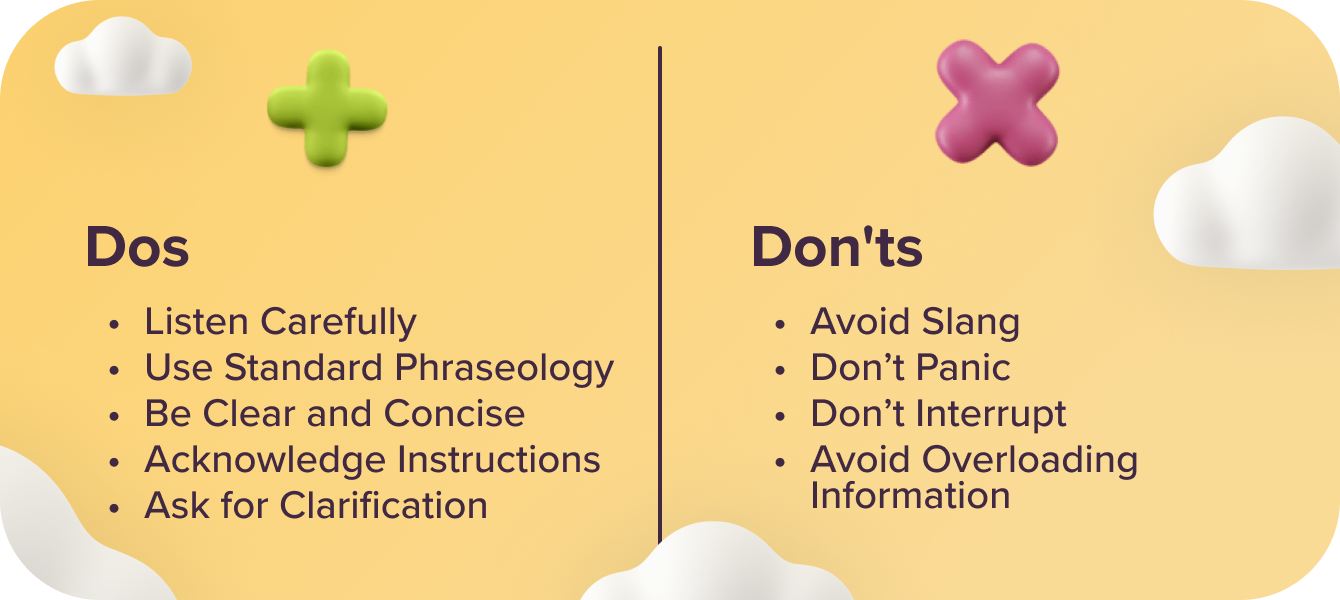
Knowing what to do and what to avoid can make a significant difference in your ATC communication. Here are some key points to keep in mind.
5 Dos
Listen Carefully. Before transmitting, ensure you fully understand the instructions given. This helps in avoiding mistakes and ensures clear communication.
Use Standard Phraseology. Stick to the approved language to ensure clarity and avoid misunderstandings. Standard phrases are universally understood and reduce the risk of errors.
Be Clear and Concise. Keep your messages brief and to the point. This ensures efficient communication and helps maintain clear airspace.
Acknowledge Instructions. Always confirm that you have received and understood the instructions. This is crucial for safety and operational efficiency.
Ask for Clarification. If unsure about any instruction, don’t hesitate to ask for a repeat or clarification. It's better to ask than to guess and make a mistake.
4 Don'ts
Avoid Slang. Using informal language can lead to miscommunication. Stick to standard aviation terminology.
Don’t Panic. Stay calm even if you make a mistake; controllers are there to assist you. Remember, they want you to succeed and are used to helping student pilots.
Avoid Overloading Information. Provide only the necessary details unless asked for more information. This keeps communications efficient and clear.
Don’t Interrupt. Wait for a clear break before responding or transmitting. Interruptions can confuse and disrupt the flow of communication.
Master Communication ATPL topic. This blog post explores the EASA ATPL syllabus, which provides a comprehensive overview of key communication topics and sample exam questions to help you prepare.
Overcoming Pressure, Fear, and Shyness
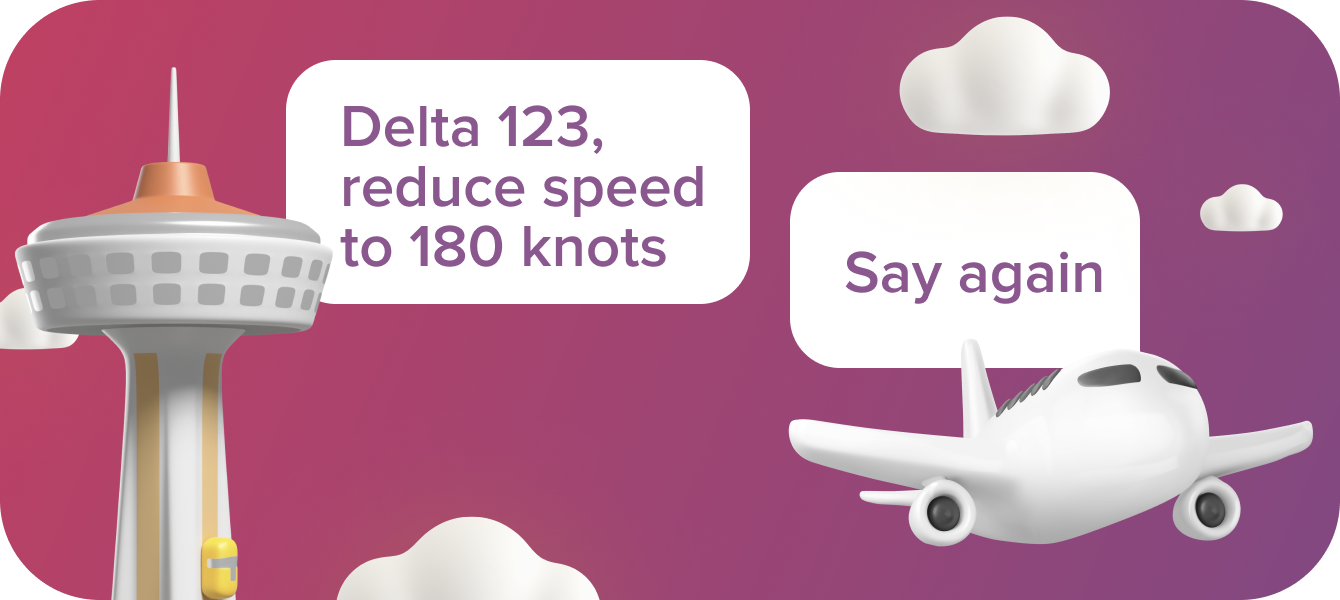
Feeling nervous about ATC communication is normal. Here are strategies to help you manage these feelings and build your confidence.
Dealing with the Fear of Freezing
It’s common for student pilots to freeze when they can’t understand ATC instructions. This fear can be mitigated by practice and preparation. Engage in simulated ATC communications using software or with an instructor. The more you practise, the more comfortable you will become.
Get familiar with common ATC instructions and responses. Knowing what to expect can reduce anxiety. Remind yourself that even experienced pilots occasionally make mistakes. Every error is an opportunity to learn and improve.
Handling Shyness
Feeling shy or intimidated is natural. To overcome this, build confidence through regular practice. The more you communicate with ATC, the easier it will become.
It will be helpful to seek feedback. Constructive criticism from instructors or peers can help you improve. Don't be afraid to ask for advice and learn from your mistakes.
Visualise successful communications to build a positive mindset. Imagine yourself handling ATC calls smoothly and confidently.
Uncover the secrets of invisible guidance. Radio Navigation for ATPL Pilots explores the subject syllabus and suggests examples of exam questions.
References for Learning ATC Communication
One of the best resources for mastering ATC communication is the UK Civil Aviation Authority's (CAA) Radiotelephony Manual. This comprehensive manual provides detailed guidance on standard phraseology, communication procedures, and best practices for air-to-ground communication.
For pilots flying in European airspace,the Eurocontrol Phraseology Database is an invaluable resource. This database offers a searchable collection of standard phraseology and communication procedures specific to the European region.
Basic Elements of Aviation Communication
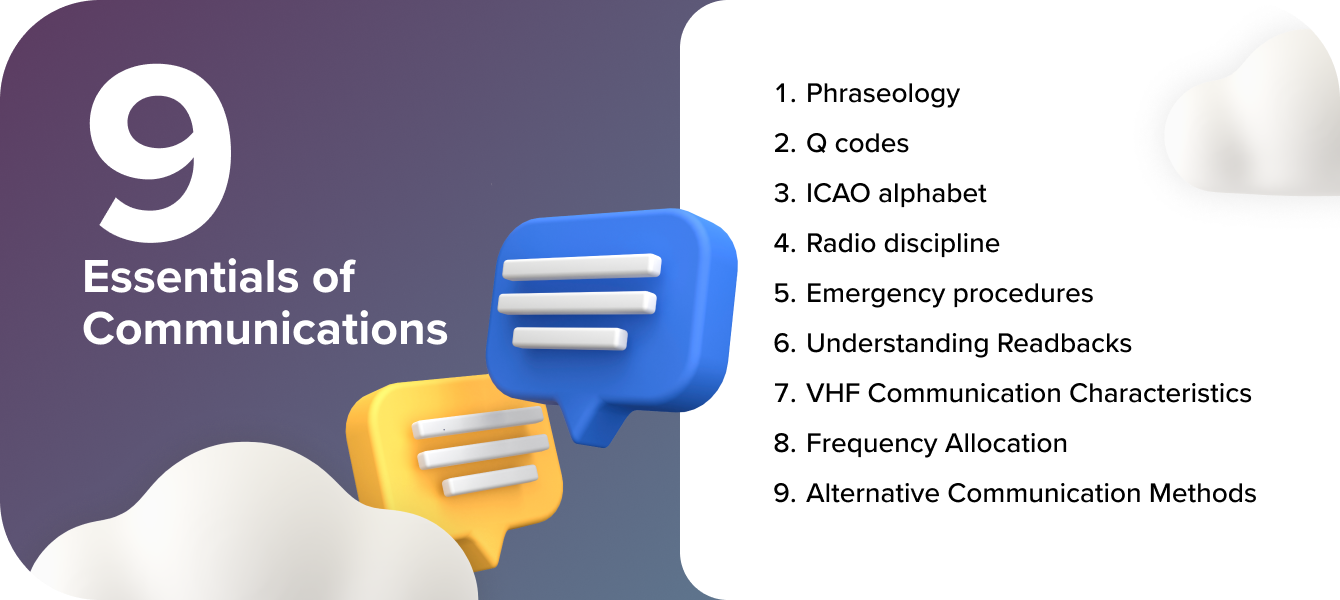
Understanding the fundamental elements of aviation communication is essential for effective interaction with ATC. Here are the key components you need to know.
Essential Information to Transmit
1. Aircraft Identification. Your call sign. This is how ATC will identify you.
2. Position. Your current location. This helps ATC to manage airspace and traffic effectively.
3. Altitude. Your current altitude. This is crucial for maintaining safe separation from other aircraft.
4. Intention. Your planned actions (e.g., climb, descend, turn). Informing ATC of your intentions helps them coordinate traffic.
5. Acknowledgment. Confirmation of received instructions. This ensures that there is no misunderstanding.
6. Request. Any specific requests or clarifications if needed.
When to Transmit
Before Taxiing. Request clearance for taxi. Ensure you understand the route and any hold-short instructions.
Before take-off. Request take-off clearance. Confirm runway and departure procedures.
Entering Controlled Airspace. Announce entry and request further instructions. This keeps ATC informed of your position and intentions.
Before Landing. Request landing clearance. Confirm the runway and any specific landing instructions.
4 Key Rules for ATC Talks
Be concise and clear.
Use standard phraseology.
Speak calmly and confidently.
Don't hesitate to ask for clarification.

Glossary of Common ATC Terms
Familiarising yourself with common ATC terms can greatly enhance your communication skills. Here are some essential phrases to know.
Affirm. Yes. Use this to confirm instructions. 'Affirmative' might sound punchy and hip, but it can be confused with 'Negative' in difficult RT conditions if the initial syllable is distorted.
Negative. No. Use this to decline or indicate a problem.
Wilco. Will comply. Indicates you understand and will follow instructions.
Roger. Message received and understood. Note: 'Roger' does not mean 'Yes'. Or 'No'. It just means you have 'received and understood' the message.
Standby. Wait for further instructions. Indicates you need a moment before responding.
Say Again. Repeat your last message. Use this if you didn't catch the message.
Cleared. Permission granted. Use this when ATC gives you clearance.
Holding. Await further instructions while maintaining position. Indicates you are waiting for the next instruction.
Mayday, Mayday, Mayday. Distress signal indicating grave danger. Use only in emergencies.
Pan-Pan. Urgency signal indicating a situation that is not immediately life-threatening. Use in serious but non-life-threatening situations.
Learn the language of the skies: From Alpha to Zulu, understand pilot communication with this guide.
Key Strategies for Professional ATC Communication

To communicate like a professional, you need to practise and apply certain strategies consistently. Here are some tips to help you approach your first ATC interactions with confidence and clarity. Remember, practice makes perfect — the more you practise, the more comfortable you'll become.
Mastering the Basics.
Be Frequency-Focused. Double-check you're on the correct frequency for transmitting and receiving instructions. Write down all relevant frequencies beforehand to avoid confusion.
Plan Your Calls. Before transmitting, think about who you're contacting, your aircraft identification, your location, and your request. Use a clear and concise format like. "Addison Ground (who you're talking to), Thrust 980TF (who you are), holding short of Alpha over Romeo (where you are), ready to taxi to active with information tango (what you want).
Sharpening Your Skills.
Anticipate Responses. As you gain experience, you'll start understanding common ATC instructions. Use this knowledge to anticipate what ATC might say and prepare your response. However, always wait for their instructions before acting.
Read Back for Clarity. Confirm your understanding of ATC instructions by repeating crucial details like take-off, landing, or taxi clearances. This ensures you're on the same page and minimises confusion.
Staying Organized.
Write it Down. Especially at busy airports, jot down ATC instructions. This minimises on-air communication and ensures you remember everything.
Silence During Transmissions. Minimise cockpit conversations while ATC transmits. This avoids missing any critical instructions meant for you.
Practice Makes Perfect.
Listen and Learn. Familiarise yourself with ATC communication by listening to LiveATC.net broadcasts, ideally from your training airport.
Simulate with Your Instructor. Practise various ATC calls with your instructor to gain confidence before your first solo flight.
Managing Real-Time Communication
Stay Calm. Take a deep breath before responding. Staying calm helps you think clearly and respond accurately.
Enhance Situational Awareness. Always be aware of your surroundings and anticipate ATC instructions. This helps you stay ahead and respond promptly.
Use Mnemonics. Develop memory aids to recall standard procedures and responses. This can help you remember key information quickly.
These are just a few examples, and many airlines and pilots develop their mnemonics to help remember specific procedures or information. Keep in mind that the best mnemonics are those that are memorable and personally relevant to you.
Mnemonics in ATC Communication
Aviate, Navigate, Communicate. This prioritises the order of tasks in flight: flying the aircraft (aviate), knowing where you are (navigate), and then communicating with ATC.
GUMPS. This helps remember the pre-landing checks: Gear Down, Undercarriage Down, Mixture Rich, Propeller Set, and Flaps Set.
CLEAT. Used for pre-take-off checks: Controls Free, Lights On, Engine Running, Avionics On, and Trim Set.
UNOS. Undershoot North, Overshoot South: This helps remember the lagging and leading action of compasses during turns in the northern hemisphere.
A-AIM. This stands for Acknowledge, Advise, Inform, and Monitor. It helps remember the different levels of communication with ATC.
5 Ws. Who, What, When, Where, Why: This can be used to structure your communication with ATC, ensuring clarity and conciseness.
READI: Readback, Explain, Acknowledge, Do, Inform: This helps remember the steps for responding to ATC instructions.

Popular Questions from Student Pilots
Student pilots often have questions about ATC communication. Here are some common queries and their answers.
How to Practise Talking to ATC?
Engage in simulated ATC sessions, use flight simulation software, and listen to live ATC channels. Additionally, practise with an instructor or join a flying club where you can participate in group exercises. The key is consistent and varied practice.
Is it Okay to say that I do not understand?
Absolutely. It is crucial to ask for clarification if you do not understand. Use phrases like “Say again” or “Unable” to communicate this to ATC. Controllers prefer you to ask rather than make a mistake due to a misunderstanding.
How to Remember Everything ATC Says?
Develop the habit of taking quick notes of key instructions. Use abbreviations and mnemonics to help recall information. Regular practice will also improve your ability to remember instructions. It's also helpful to repeat instructions back to ATC to confirm your understanding.

Takeaway
Mastering ATC communication is a journey that requires patience, practice, and perseverance. Every pilot, from student to professional, has faced the challenges you are encountering. Embrace the learning process, seek continuous improvement, and remember that effective communication is a cornerstone of safe and successful flying. With each flight, your confidence will grow, and soon, talking to ATC will become second nature. Keep pushing forward, stay motivated, and enjoy the incredible journey of becoming a skilled and confident pilot. The sky is not the limit; it's just the beginning.


